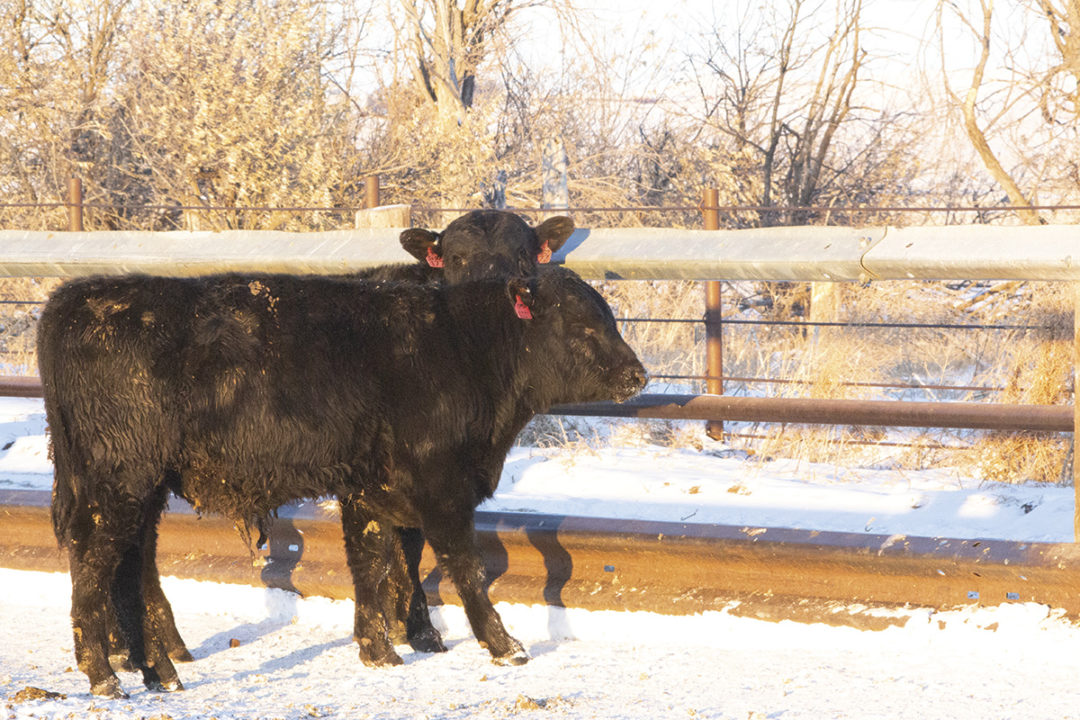Backgrounding spring-born calves on winter range or cornstalk residue after weaning is a way to increase weight and add value to weaned calves. However, calves grazing low-quality dormant forages or residues need protein supplementation to support gain. This year, dried distillers grains, a common protein supplement across the Great Plains, cost approximately 15% more than in 2021, without factoring in freight. Because many other costs associated with agriculture production have also increased, producers are looking for ways to decrease input costs to improve margins.
Many producers assume providing minimal protein supplementation to target approximately 1 pound of gain per day during the winter, and taking advantage of subsequent compensatory gain, is the most economical way to manage calves. This year, with higher input costs, it would certainly be tempting to target this low rate to reduce the amount of protein supplement needed. Compensatory gain is a phenomenon where nutrient-restricted calves grow at a faster rate than non-restricted calves after they all receive a higher plane of nutrition. However, research data suggest the economics of compensatory gain need to be carefully evaluated.
In a study conducted in Texas, calves supplemented on dormant native range to gain 1.5 to 1.75 pounds per day held a weight advantage over calves gaining 0.5 or 1 pound per day on native range after they subsequently grazed wheat pasture. Moreover, the calves that gained 0.5 pound per day were not supplemented and experienced compensatory gain on wheat pasture. Consequently, they weighed the same at the end of wheat pasture grazing as the supplemented calves that gained 1 pound per day. This resulted in an economic loss for the calves supplemented to gain 1 pound per day, as they had the expense of supplement with no lasting weight advantage.
However, non-supplemented calves only compensated 38% of the calves supplemented to gain 1.5 pounds per day. Economic analyses of the supplementation strategies at various prices of distillers grains and the value of added gain suggested that producers selling calves after grazing dormant range made the most money by supplementing calves to gain 1.75 pounds per day. Those selling after wheat pasture grazing were more likely to profit from feeding calves to gain 1.5 pounds per day on native range. Even when the distillers grains price was high and the value of the calf gain was low, supplementing to achieve gain of 1.5 pounds per day was economically positive.
Several studies in Nebraska supplemented calves on low-quality forage in the winter, grazed grass in the summer, and then finished the calves on a corn-based diet and reported similar results. Calves backgrounded to gain 0.5 pound per day compensated only 37% of the calves supplemented to gain 1.5 pounds per day in the winter, resulting in the higher-supplementation-level calves holding the advantage of greater bodyweight in the summer and heavier carcasses after harvest. Economic analyses revealed that even with distillers priced at 110% the value of $7-per-bushel corn, supplementing for the higher rate of winter gain was more favorable after finishing than a low rate of winter gain.
A study in West Virginia supplementing timothy hay with soyhulls and soybean meal also revealed similar results in that calves gaining 1 pound per day or less experienced compensatory gain during finishing but had lighter carcasses than calves gaining 1.75 pounds per day during the backgrounding phase.
Producers planning to background calves this winter may want to develop a supplementation strategy based on expected marketing time points and target weight gain accordingly. How much supplement to provide and what rate of gain to target can depend on whether producers are selling the calves after winter backgrounding or retaining ownership through summer grass grazing or all the way through the finishing phase. Numerous studies have suggested that a low winter rate of gain may not be the most economical choice even in light of high commodity prices.








